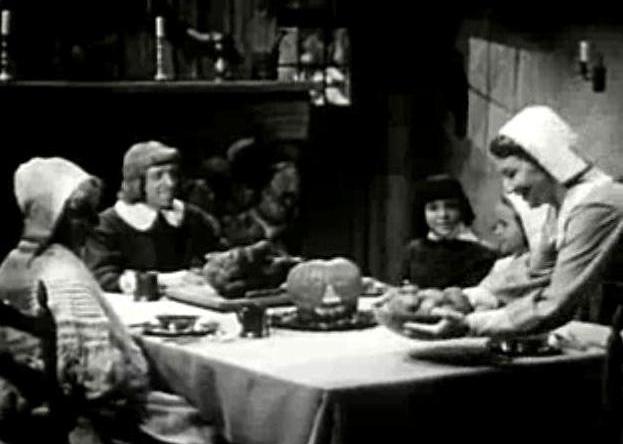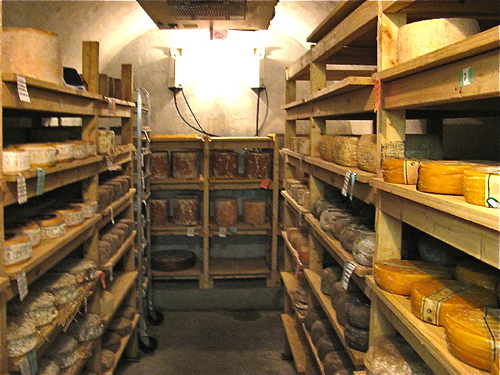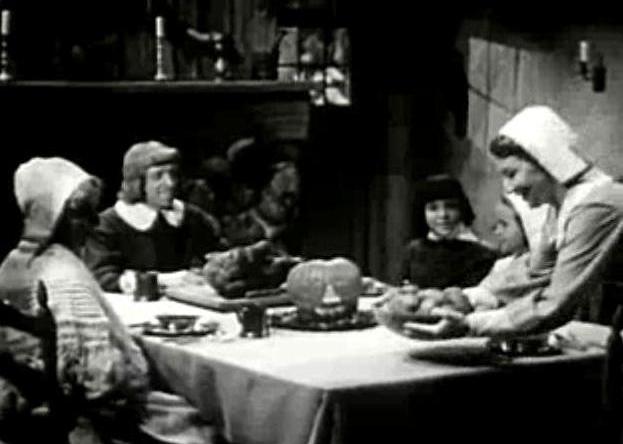Food Studies features the voices of volunteer student bloggers from a variety of different food- and agriculture-related programs at universities around the world. You can explore the full series here.
In  A still from The Miracle of the Can.The Miracle of the Can, a 1956 promotional video for the American Can Company, a husky-voiced narrator observes, “The time for reaping is so very short. That perhaps is why man has always made so much of harvest, made it a time of festival or prayer, for he knows his life depends on swiftly gathering in the bounty nature gives him.”
A still from The Miracle of the Can.The Miracle of the Can, a 1956 promotional video for the American Can Company, a husky-voiced narrator observes, “The time for reaping is so very short. That perhaps is why man has always made so much of harvest, made it a time of festival or prayer, for he knows his life depends on swiftly gathering in the bounty nature gives him.”
In the next scene, the sound of beating drums gives way to stirring fiddle music, as the camera moves indoors, to a family dinner table, with father, son, daughter, and grandmother dressed in Pilgrim garb. As the mother of the family sets yet another plate of food on the table, we hear: “Thus in America we have always offered thanks for the blessings of the earth, which reminds us how the harvest tided our forefathers through lean and hungry winters.”
The camera then pans to a window, which shows the swiftly changing seasons. As summer’s bountiful apple tree passes into fall, its fruit begins to drop. “Nature,” the narration continues, “has a way of holding out her bounty, then snatching it away.” Now we finally get to the real topic of this promotional film: the way canning made a wide variety of seasonal foods available all year long. A shiny metal cylinder slowly appears to engulf an apple hanging on its branch. “A simple idea but one of great promise. We refer to it, and rightly so, as the miracle of the can.”
The miracle of the can! It subverts the cycles of nature, ridding humans of those lean and hungry winters. But where does that leave those harvests that once evoked festivals and prayers, Thanksgiving central among them? If we don’t experience hunger or want in a post-can world, then what motivates us to celebrate the time of harvest?
These are some of the questions I recently asked myself when watching The Miracle of the Can as part of my research for my dissertation, on the history of canned food in America.
As the film implies, we used to celebrate Thanksgiving as a way of acknowledging the abundance of autumn crops, made special because of their absence at other times of the year. Of course, it’s not that Thanksgiving hasn’t become much more than a celebration of the harvest. But the film got me thinking about the way that Thanksgiving gives us a chance to celebrate seasonality in a way almost no other occasion does.
Americans as a whole — whether they care about seasonal eating the rest of the year or not — do seem to revel in a seasonal fall diet during this one day. And while many of us may spend the rest of our lives demanding that the same vegetables and fruits be available to us year-round, we pause around Thanksgiving to recognize that it’s possible — even downright enjoyable! — to make a meal that is particular to a season.
So, canned food, along with the newer “miracles” of freezing and shipping technologies, may put the “June garden in the January pantry” (as I wrote about in a previous Grist post called Canvolution!), offering us peas and peaches and pears in deep winter. But we should seize the chance to learn what this holiday has always had to teach us. Thanksgiving is a perfect opportunity to highlight the ways that eating with the seasons can provide a rhythm and sense of celebration that is otherwise so absent from a monolithic year-round diet.
*Thanks to Dan Bouk for beginning the conversation that led to these ideas, nearly one year ago.



